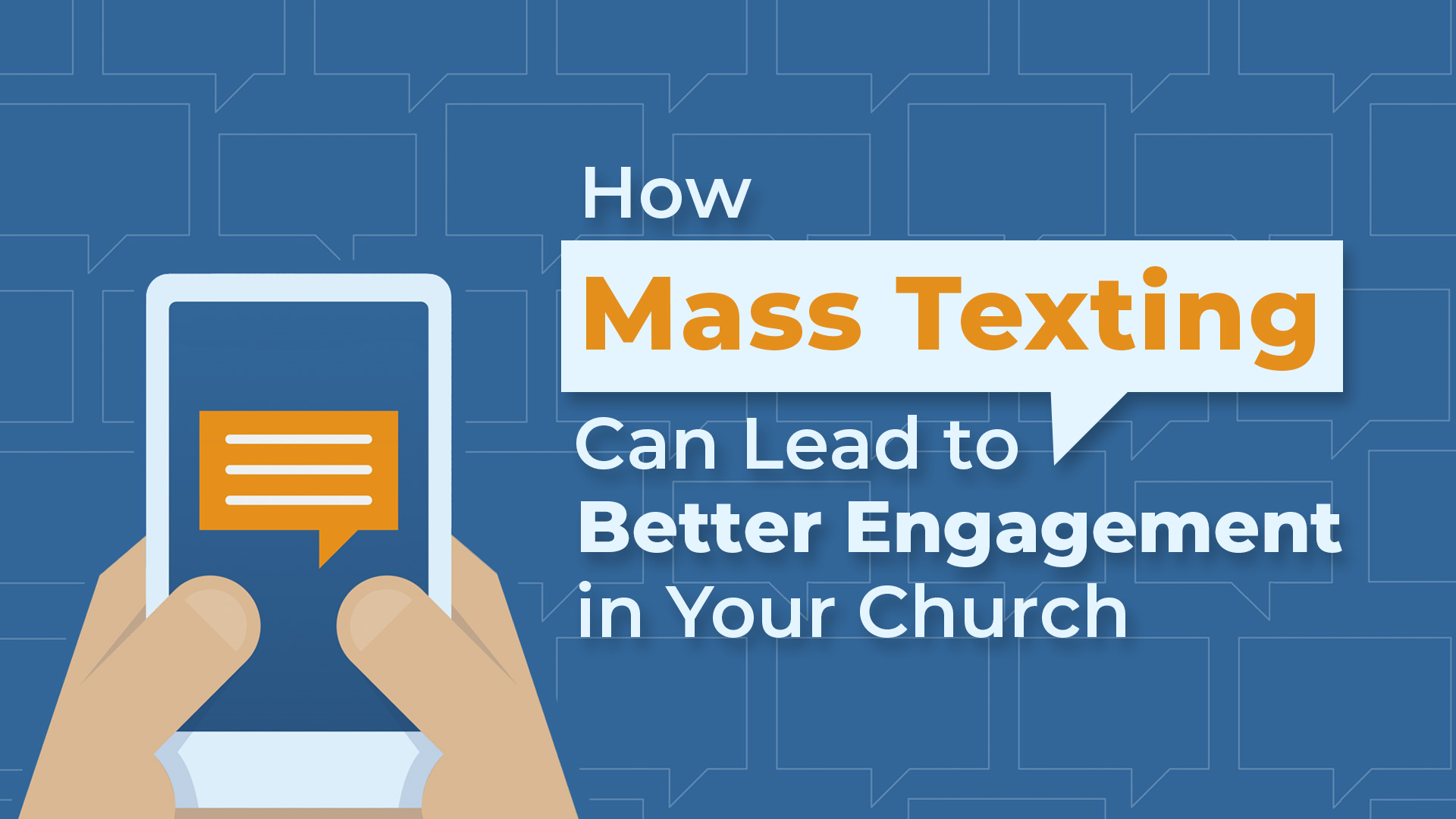
Every day, most of us receive text messages—from our family members, coworkers, and friends. But have you ever received a text from your church? The concept might seem foreign to some, but many churches use a mass texting service to quickly communicate with their members.
Church texting can be a great addition to your communication strategy with minimal effort and a big payoff. Here’s how you can utilize a church texting service to engage with your members and communicate with them effectively.
What Is Mass Texting?
Before we dive into a texting strategy, let’s first identify what mass texting is, because it’s notably different from sending a text from your personal phone.
Mass texting (also called SMS) allows you to send texts to a large number of people from one account (without sending the message in a group text). You can segment your list like you would for your email marketing to send messages only to those for whom your message is relevant.
Why Use Church Texting?
There are many reasons why churches might choose to text their congregants. First, it’s a quick way to reach your members. Some people might not have access to their email away from a computer, or they might not check it outside of certain hours. Sending a text message ensures a more timely read.
Second, it’s a more personal form of communication than email. You can test out different tones of voice, perhaps taking on a more casual approach. While it’s not one-to-one communication, you can still be empathetic, understanding, and warm.
Lastly, you might use church texting when your message needs to be short and sweet, time-sensitive, or actionable. The naturally more short form of this communication makes it ideal for quick notes.
When to Use Mass Texting
You should utilize your church’s mass texting service with care, employing a strategy for when to send messages and what to send. Sending too many texts could result in people ignoring them, rendering them ineffective!
Here are some reasons we suggest sending an SMS:
- After someone visits
- When someone becomes a member
- Updates on church events
- Unique worship times (Lent, Holy Week, Easter, Advent, Christmas, and so on)
- Giving or fundraising campaigns
- Closings and cancellations for inclement weather
Add your planned SMS messaging to your church communications calendar to keep everything organized.
How to Select a Mass Texting Service for Churches
If you already pay for a church management software, a texting service might be included in your plan. (Church360° Members includes mass texting for free with your subscription!) If your plan doesn’t offer texting, you might be able to add it to your existing subscription for a fee.
If you’d like to invest in a dedicated mass texting service, there are many paid options out there. Some might even integrate with your existing email marketing service.
Here are some texting service features to consider when selecting a plan:
- Number of contacts
- Number of messages sent per month
- Ability to include images
- Character limit
- Automated responses
How to Know Your Church Texting Strategy Is Working
Like any church communications, it’s important to regularly analyze your strategy to see if it’s working—and church texting is no different! Of course, for different messages, you’ll be tracking different metrics to determine success, such as:
- Engagement
- Event registration or attendance
- Giving increases
If you’re not satisfied with the results, you might need to alter your strategy. Try shortening or lengthening your message length, including a link or image, or sending messages at a different time.
Try out one of the only church management software options that gives you texting for FREE with a Church360° Members trial.
























